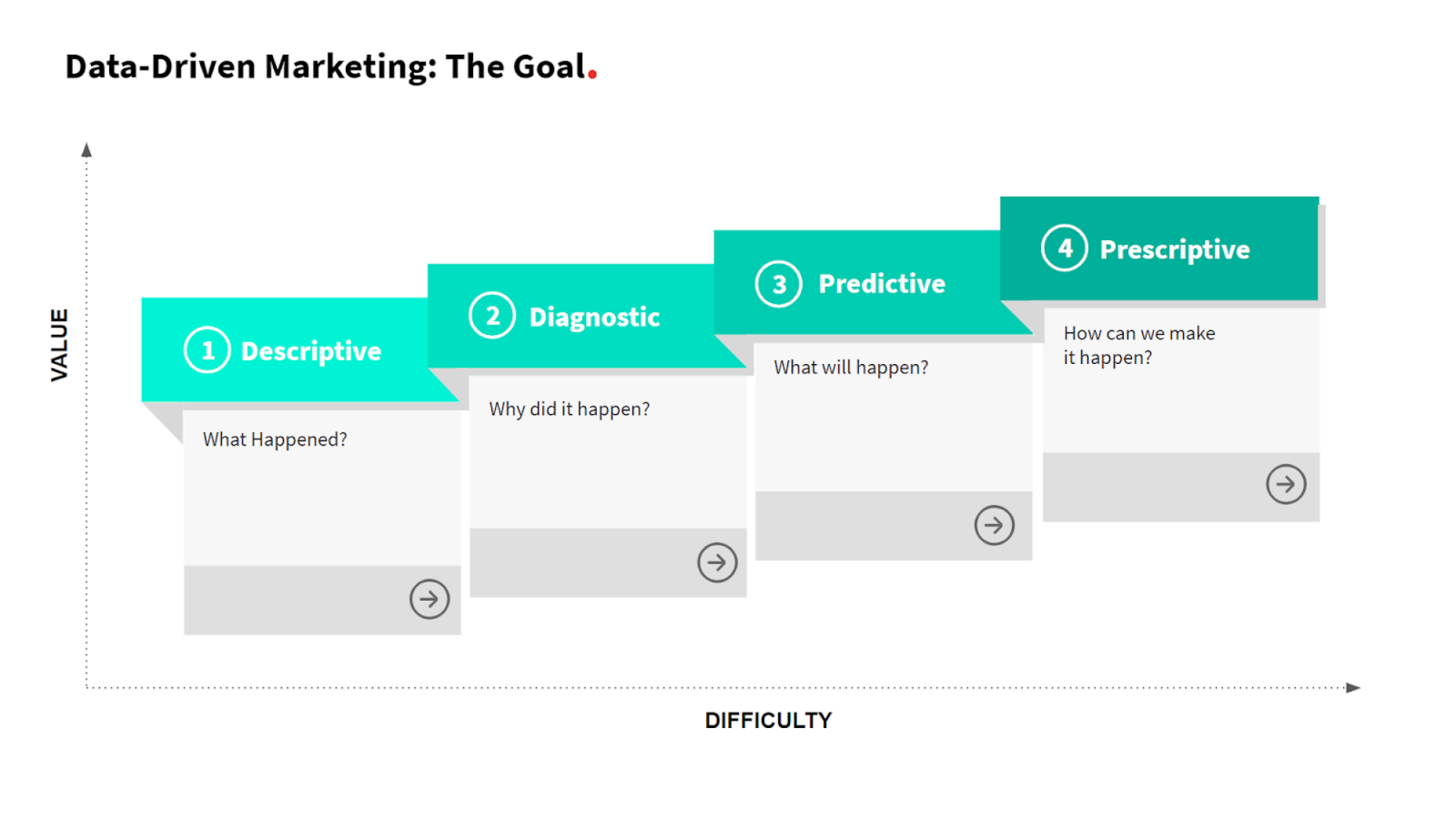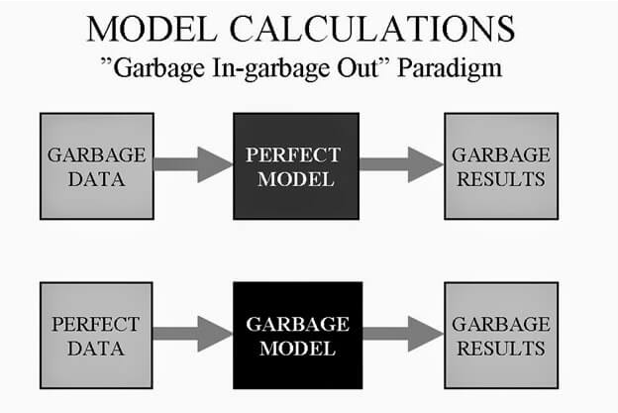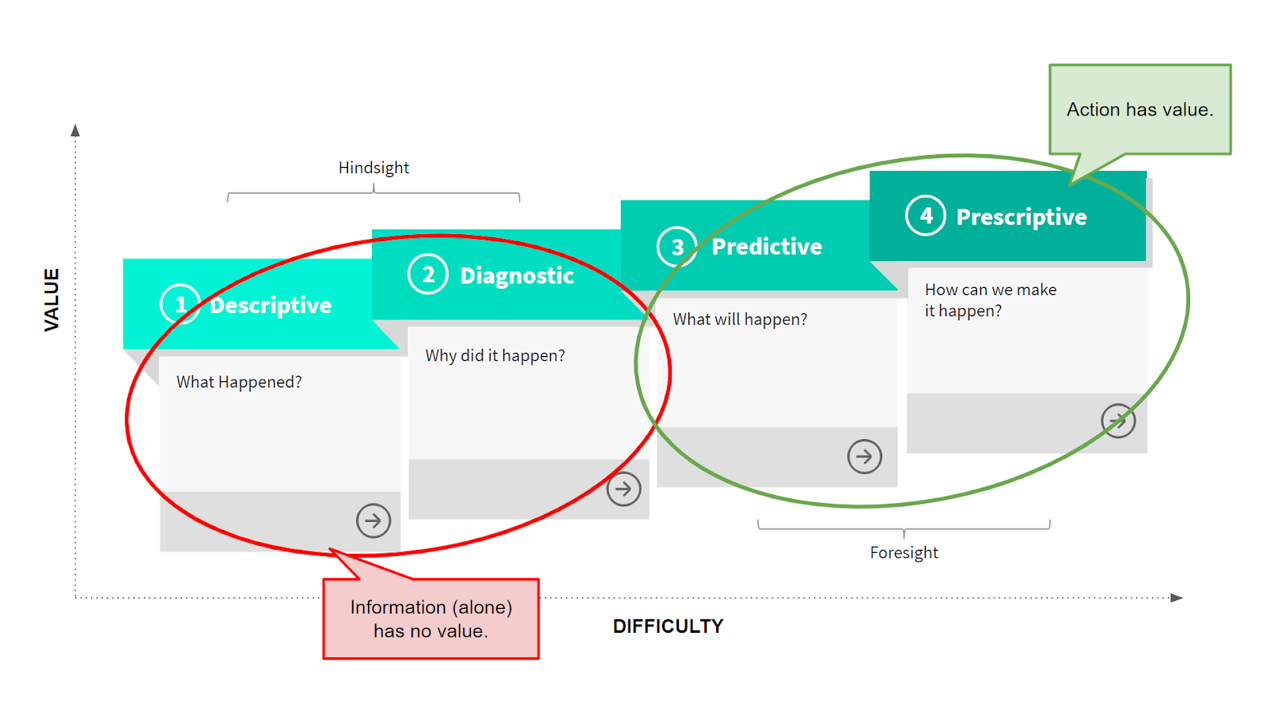Data driven marketing maturity modell

We hear about data, analyzes and the fact that (almost) everything in online marketing can be measured, for years. “Data-driven” (data-driven business, decision making, or marketing) has become a buzzword. But what does that really mean? Are your business and your marketing data-driven or not? Probably the latter answer is the correct one.
What is “Analytics Maturity” and how to achieve it?
Based on value for your company and difficulty, effort and money you need to invest, we distinguish 4 levels of Analytics Maturity.
- Descriptive
- Diagnostic
- Predictive
- Prescriptive

1.Descriptive level
The descriptive level represents the data analysis of events on your website, campaign or in your company, that already happened. In the past. At first glance, this is an obvious and simple thing. Most marketers and business owners would answer the question “Is your company on this level?” “Yes! Of course, we are!”. But the reality is different.
Each of our cooperation with a new client starts with an analytical scan. We need to answer these questions:
- Is the client collecting the right data?
- Are the data correct?
- Are Google Analytics and Google Tag Manager accounts set up to work as intended?
So far, we haven’t found a single client with no mistakes in the data, settings, or processes. Actually, lots of mistakes are pretty common and often quite basic.
In the analytical community, we use the expression “Garbage in garbage out”.

What does it mean? If your data are wrong, then also your results and reports will be wrong. And, of course, your decisions based on these data will be also wrong. 😉
The conclusion? Make sure that you collect the right data, the right way. It’s the foundation stone for all next levels.
2. Diagnostic level
Are you sure your data are correct? Then it’s time to analyze them! At this level, we answer the question “Why did it happen?”. And again, it’s the task, that seems to be pretty easy. Although it’s not. 😉
We (as people, the human race) are searching for patterns. All the time. We also think that we’re rational beings driven by facts. But in fact, we’re most likely driven by our feelings and intuition. If you don’t believe me, read a book Thinking fast and slow. 😉
So, if you want to be on the second level of Analytics Maturity, you need to make sure, that you really do your conclusions based on facts, data, not on your intuition or bias. If you don’t have enough data, then run an A/B test, collect more data or look at your data from a different point of view.
To look at some anomaly at the report and say what’s the reason for it without any deep analysis is easy. Anybody can do that. But finding the real reason is much more difficult. Sometimes even impossible.
Both the first and the second level is only about the past and has almost no added value to your business. The exciting stuff happens on the 3rd and the 4th level.

3. Predictive level
Every marketer, CEO or business owner would love to predict the future. It would be a great competitive advantage, that’s for sure ;). If you can read and analyze your past data correctly, then you can also see what’s coming. Of course, this pronouncement should be taken with caution. Business, the times we’re living and the online world are unpredictable. There is always something happening, that we don’t expect or that literally shock us. Right?
Back to the topic. If you managed the first two levels, you should be able to answer questions like:
- If we invest XY more money to our Ad’s campaigns, that will bring us XY more visitors.
- If we have XY more people in the SEE phase, our number of costumers will raise XY-times.
- If we publish the article with the CTA “Subscribe to our newsletter”, we’ll have XY more email addresses in our list.
4. Prescriptive level
Welcome to our last level of Analytics Maturity where we answer the question “How can we make it happen?”.
You can reach this level if you meet 2 prerequisites:
- You’ve managed to get through all 3 previous levels.
- You’ll integrate analytics strategy with your business, marketing strategy and goals.
Creating a successful analytics strategy is not just about implementation or establishing the right metrics. You need to know where is your company now, where do you want to go, what are your goals and how do you want to reach them. If you don’t know this, then no measurement plan will work for you.
If you have all the above, then make sure that the analytics strategy mirrors your goals.
But the most important thing is to know, that effective analytics is not a static process. If you really want to be data-driven, then you need to go through all levels over and over again. You need to:
- Control and test your data. Make sure they’re correct, all the time.
- Question every one of your decisions, if it was based on data or just intuitions and your wish.
- Predict, what will happen.
- Update the business and marketing strategy and make sure that your analytics and measurements are in line.
